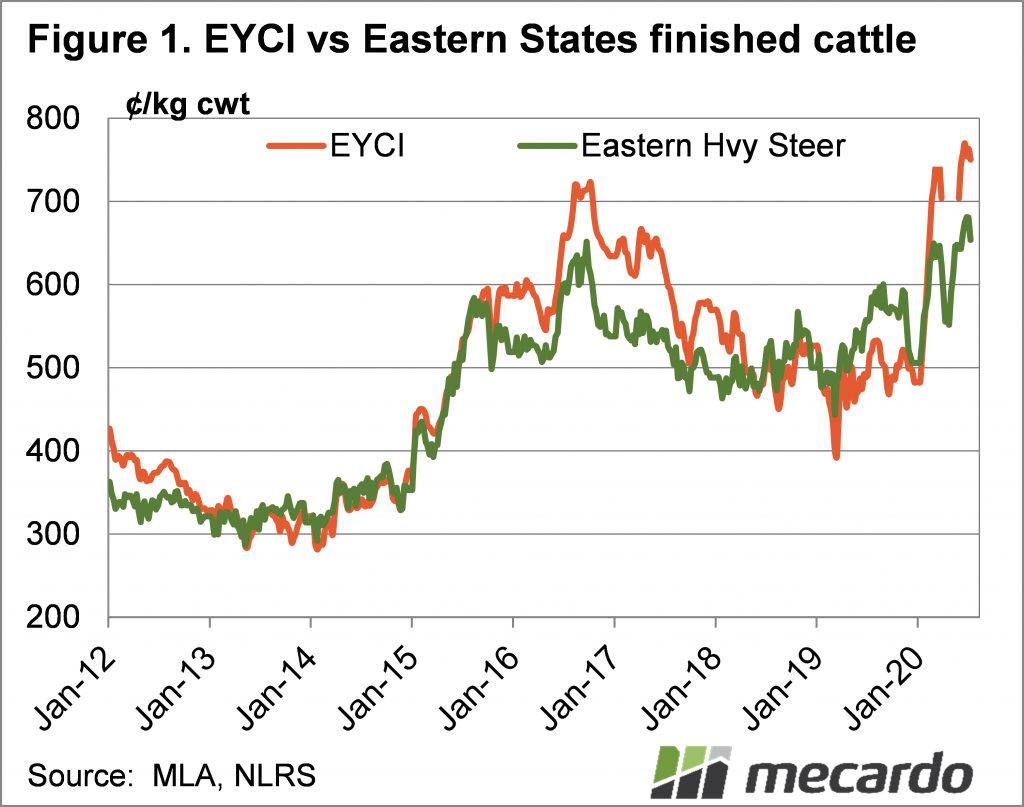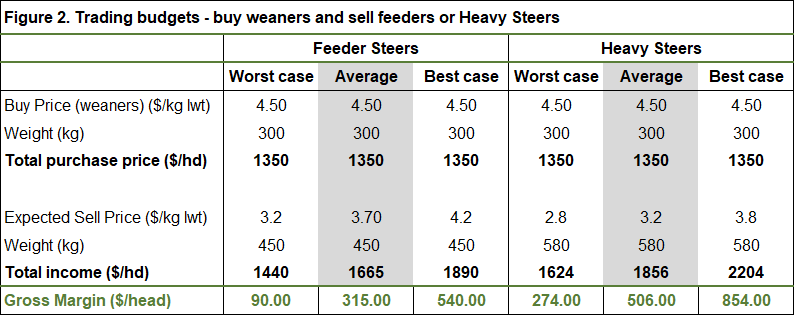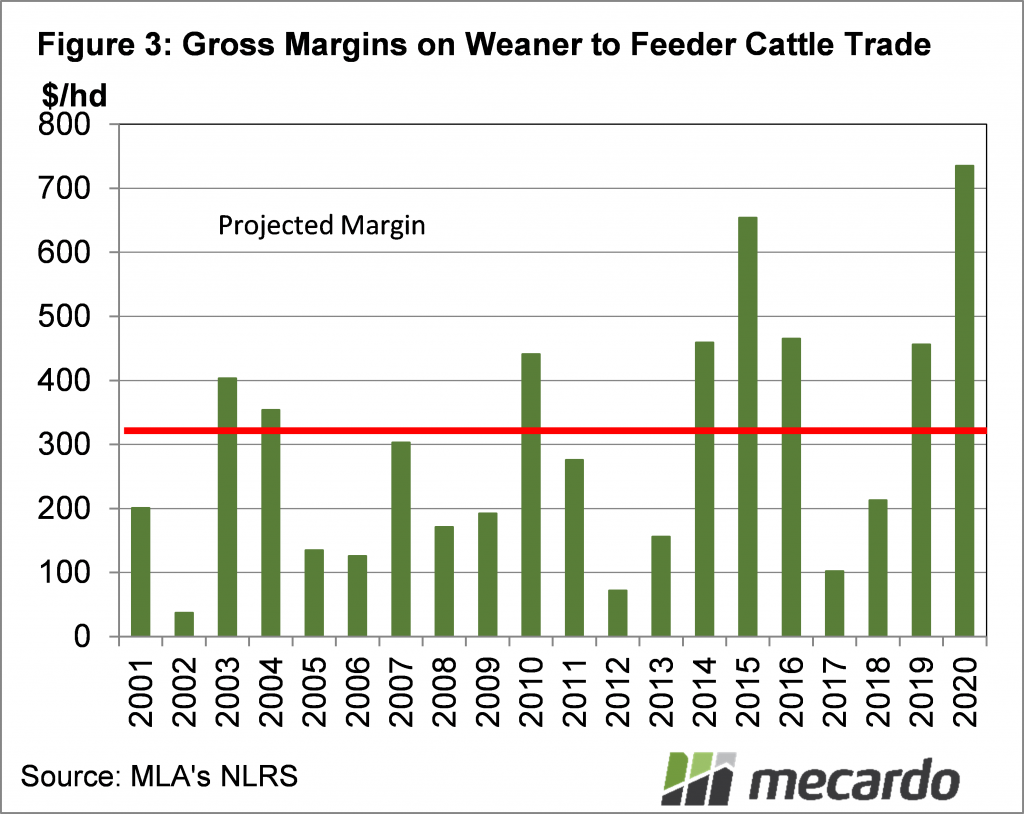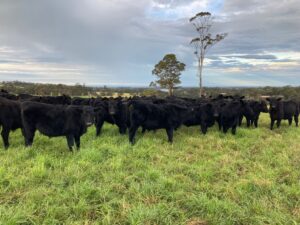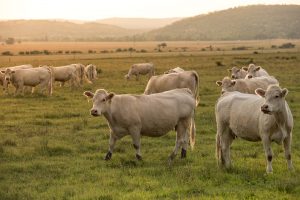It has been some time since we updated our backgrounding trading margins, in fact, the spreadsheet still had a weaner price of 320¢. Things have obviously moved since then, and uncertainty has hit a high. It turns out there is still money in using grass to put weight on cattle, as long as the grass doesn’t have a value put on it.
Young cattle prices remain very strong, and restockers are driving the market. The Eastern Young Cattle Indicator (EYCI) is sitting at close to a record high of 750¢/kg cwt, or 405¢/kg lwt (figure 1). This is 250¢, or 50% above the same time last year
Feeder Steer and Heavy Steer prices are also up, but they have only gained 25% and 23% respectively. With lighter cattle prices much higher, in relative terms, and what they are turned in to, margins have to be squeezed.
The EYCI is a weighted average of steer and heifers, but for the purpose of estimating margins, we’ll use Angus Steers around 300kgs liveweight. On AuctionsPlus good lines of 300kg Angus Steers are making 430-450¢/kg cwt, depending on location and size of the line. We’ll use 450¢ landed as a buy price, which puts steers at $1350 per head.
Our spreadsheet shows this time last year we had a feed cost of $600 per head to convert light steers into feeders. This time we use no cost, as the price of grass is extremely variable, and has a lot to do with what else it can be used for.
Feeder and Heavy Steer prices are strong now, but there is plenty of conjecture as to whether they can stay there. Weakening export prices, and stronger supply of feeders and finished cattle in the spring could see prices fall, and we need to cover the scenarios.
Figure 2 shows the gross margins on buying 300kg steers now and selling at different price levels. At today’s pricing, there is still a reasonable margin in putting 150kgs on steers. Putting on more weight also returns good margins. The red line on figure 3 shows how the margin stacks up versus the historical annual average.
What does it mean?
Cattle trading margins always tighten when there is plenty of grass available and this year is no different. What is different is the risk faced with the uncertainty surrounding cattle markets.
We do know that supply is going to remain tight, so the worst-case scenario values are unlikely, and prices will have to go even a bit lower to result in a loss on the trade. If the market does stay at current strong levels, there is hope of very strong buy prices still resulting in a very good margin.
Have any questions or comments?
Key Points
- Young cattle prices remain near record highs, with feeder and finished steer prices not having risen as strongly.
- Gross margins on young steers bought now look like they will be at historically good levels.
- There is some risk to the downside in cattle margins, but tight supply should provide support.
Click on graph to expand
Click on table to expand
Click on graph to expand
Data sources: MLA, AuctionsPlus, Mecardo




